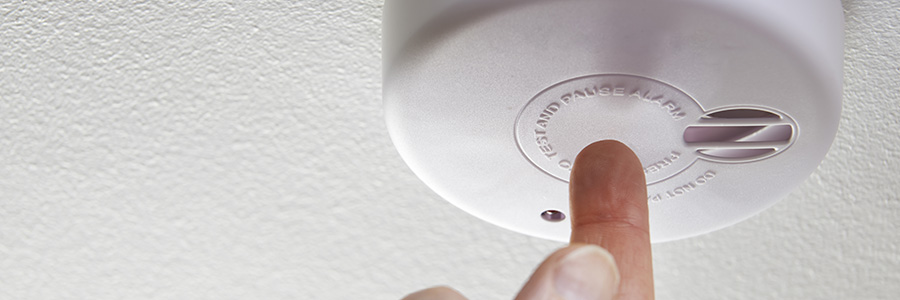Smoke Alarms

In an emergency, seconds count; a functioning smoke alarm can be the difference in preventing a tragedy in your home. Smoke alarms save lives by giving residents time to escape the fire. Working smoke alarms cut the risk of dying in a fire in half.
Installing your smoke alarm
Smoke alarms must be installed on every level of your home where people sleep. Place them on a ceiling or high up on a wall close to every sleeping area. For the best protection, interconnect all smoke alarms so when one sounds, they all sound.
Keep smoke alarms a reasonable distance from bathrooms, heating appliances, windows, ceiling fans, kitchen or garage. The fumes, steam or exhaust could cause a false alarm.
Always follow the manufacturer’s instructions when installing smoke alarms.
Basic smoke alarm maintenance
To keep your smoke alarms in good working order, they need to:
- Be tested at least monthly
- Have the batteries replace yearly or when the detector is chirping
- Be replaced every 10 years, even if they are hard-wired
The sound of a smoke alarm
Each smoke alarm may produce a slightly different tone; however, all smoke alarms are intended to alert you to the possibility of a fire in your home. Listen for the sound of your smoke alarm when testing it. Be sure to familiarize yourself with its tone; if you are hard-of-hearing or otherwise unable to hear the alarm, consider installing a smoke alarm that is equipped with a strobe light to alert you to the potential danger.
Have an escape plan
Your home escape plan should include two ways out of each room, a designated meeting place and a plan to call 9-1-1 when you are safe. Practise your plan at least twice a year with all members of your family.
When your smoke alarm sounds, follow your home escape plan to safely exit your home. It’s important that you get out immediately and stay out while you wait for the Saskatoon Fire Department to arrive.
